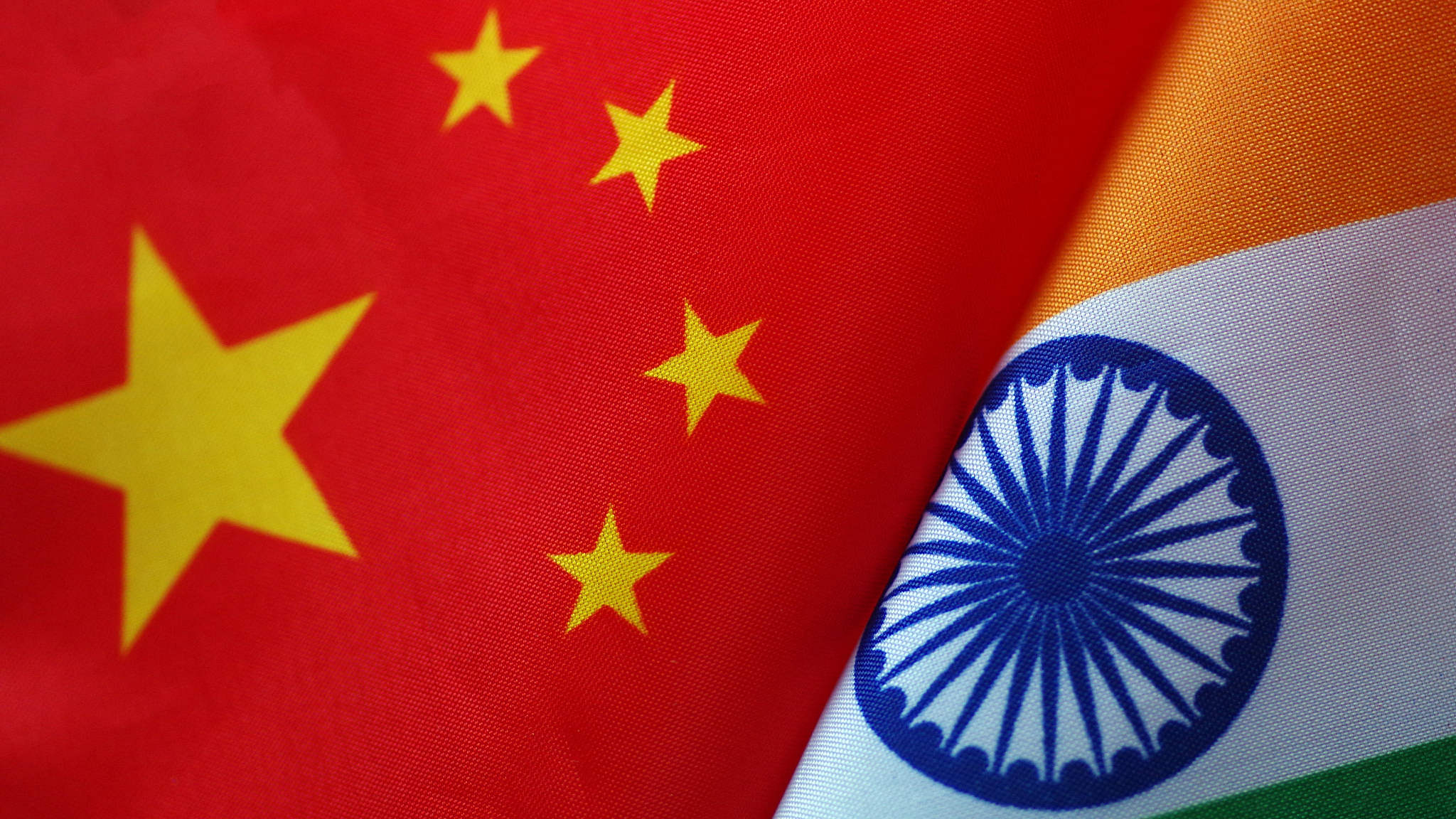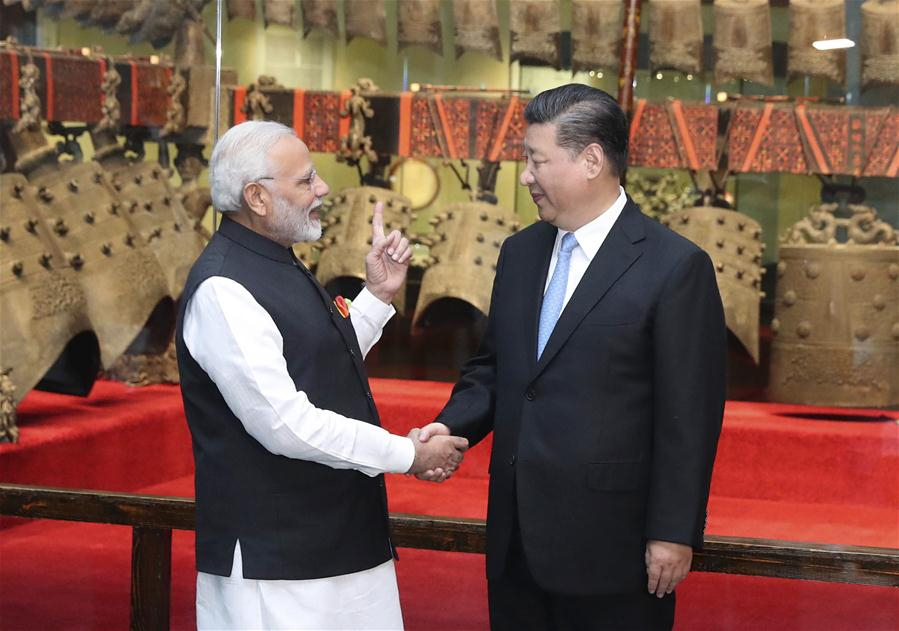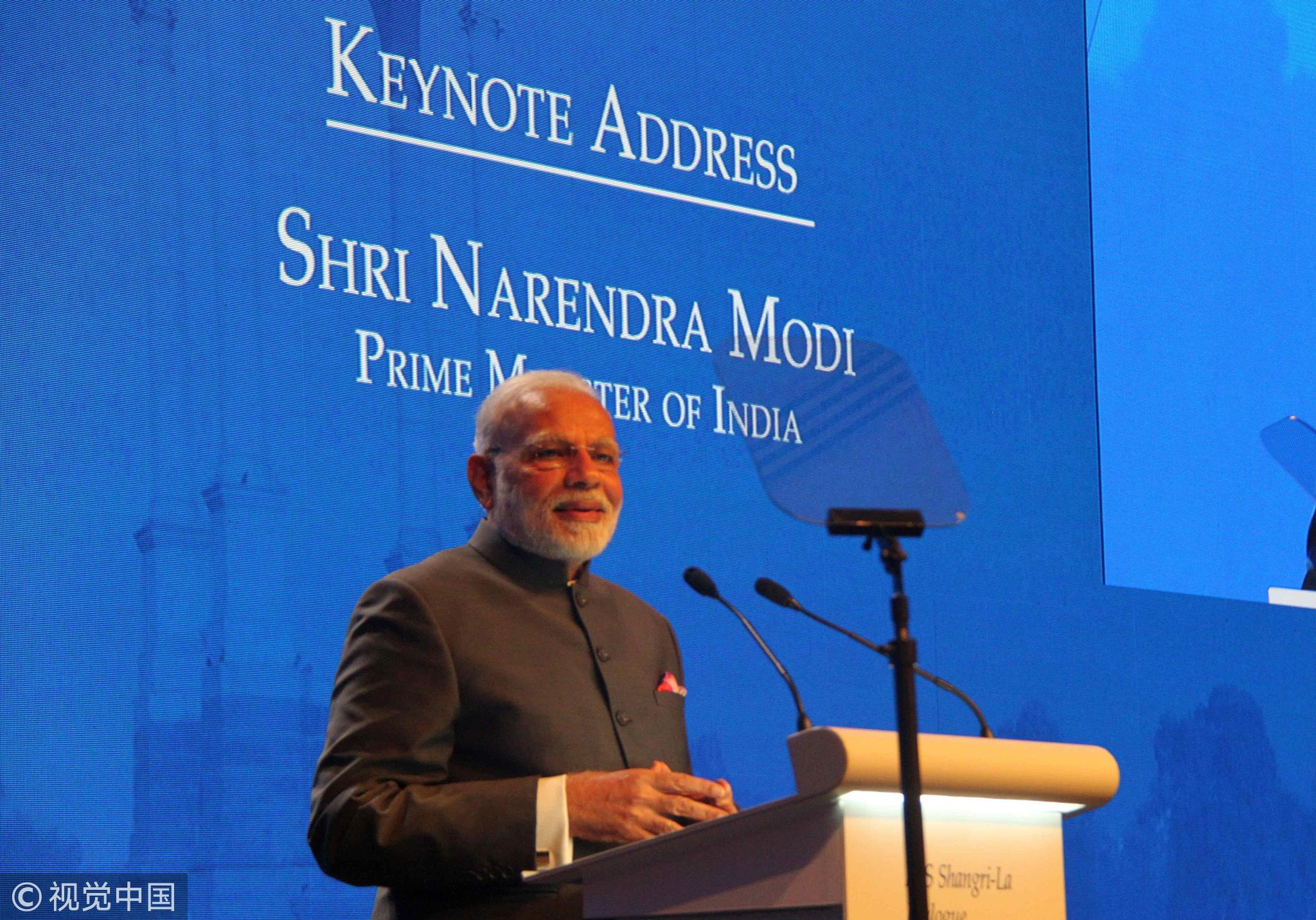
Opinions
18:32, 07-Jun-2018
Opinion: Relations between China and India require care, nurture
Liu Youfa

Editor’s note: Liu Youfa is a senior research fellow at Pangoal Institution. The article reflects the author’s opinion, and not necessarily the views of CGTN.
The recent private meeting between Chinese President Xi Jinping and Indian Prime Minister Narendra Modi in Wuhan has reset the clock on the bilateral relations between two countries.
In addition, the incoming Summit of the Shanghai Cooperation Organization in Qingdao will be the first testing ground on which the international community will find out how the two leaders will reach out to each other and how to jointly move the institution forward in terms of economic integration and security cooperation, to which both countries are stakeholders.
In order to ensure the enlarged organization will carry forward the Shanghai Spirit based on the principle of mutual trust, mutual benefit, equality, coordination, respect for diversity of civilization and common development, China as the host country should reach out to India in the following areas:
Firstly, both governments should carry out the consensus by the two leaders to compartmentalize standing issues while concentrating efforts to move ahead with meaningful cooperation in the areas where the two countries have a convergence of interests, which is required to “bridge the trust deficit.”
For that matter, security cooperation could serve as the immediate platform where both countries have the most outstanding convergence of interests.

Chinese President Xi Jinping (R) shakes hands with Indian Prime Minister Narendra Modi during their visit to an exhibition of cultural relics at Hubei Provincial Museum in Wuhan, capital of central China's Hubei Province on April 27, 2018. /Xinhua Photo
Chinese President Xi Jinping (R) shakes hands with Indian Prime Minister Narendra Modi during their visit to an exhibition of cultural relics at Hubei Provincial Museum in Wuhan, capital of central China's Hubei Province on April 27, 2018. /Xinhua Photo
Secondly, both countries should expedite the cooperation via a bilateral channel in the area of infrastructure which would immediately help patch up transportation, post and telecommunication networks across India and more effectively connect India and neighboring countries.
This would allow India to play a more crucial role as the economic center on the subcontinent of South Asia.
Thirdly, both countries should design and carry out closer cooperation in the manufacturing sectors which would complement the master plan by Prime Minister Modi to invigorate Indian manufacturing industries and allow Indian companies to increase the production of tradable goods and increase domestic and foreign trade.
The Chinese and Indian companies could establish joint ventures and jointly produce and market their end products to countries in South Asia, in particular, and those along the Silk Road.
The Chinese government recently announced that it will allow 22 kinds of cancer treatment drugs to be imported free of duty, an area where Indian pharmaceutical manufacturing companies have clear advantages.

India's Prime Minister Narendra Modi (L) being welcomed upon his arrival in Wuhan on April 26, 2018, ahead of a meeting with Chinese President Xi Jinping. /VCG Photo
India's Prime Minister Narendra Modi (L) being welcomed upon his arrival in Wuhan on April 26, 2018, ahead of a meeting with Chinese President Xi Jinping. /VCG Photo
Thus, the Indian companies could extend their production lines into China, form joint ventures with Chinese partners, jointly produce and market the drugs in the Chinese and overseas markets.
More importantly, the two governments should design and carry out industrial cooperation which would allow the convergence of software advantages by Indian companies and the hardware capabilities of the Chinese partners. This would facilitate conditions to really boost manufacturing capabilities of both countries, and allow them to set an example of win-win modality of South-South cooperation.
In short, the closer cooperation in the manufacturing sectors would help India to directly and indirectly address its growing trade deficit with other countries, especially with China.
Fourthly, both countries should resume the effective construction of the Bangladesh-China-India-Myanmar Economic Corridor which has been idle for years.
This would allow Indian and Chinese companies to extend their production and service chains to the corridor and beyond so that the four countries would benefit from more opportunities for trade, investment, industrial cooperation in a joint effort to provide steam for faster economic development and social progress for all the member countries.

Indian Prime Minister Modi gives a keynote speech at the IISS Shangri-La Dialogue in Singapore on June 1, 2018 ./ VCG Photo
Indian Prime Minister Modi gives a keynote speech at the IISS Shangri-La Dialogue in Singapore on June 1, 2018 ./ VCG Photo
Fifthly, both countries should identify closer cooperation in the energy sector. It is true that both countries are net importers and consumers of oil and gas, which gives strong impetus to the two governments to join hands in the construction of regional energy transportation networks.
This would connect energy-producing countries in West Asia and Central Asia with energy-thirsty countries across South Asia and China.
Considering the fact that China, India and Pakistan are all members of the SCO, the above regional project would certainly facilitate conditions to address the thorny triangle relations among the three countries and contributing to the security in and around Indian Ocean.
Last but not least, both countries should design ways and means of promoting closer cooperation in the area of tourism and education, which would allow companies and institutions from both countries to tap into great potential and promote mutual understanding, as well as consolidate the cultural and social foundation to allow bilateral strategic relations to move forward and move far ahead.

SITEMAP
Copyright © 2018 CGTN. Beijing ICP prepared NO.16065310-3
Copyright © 2018 CGTN. Beijing ICP prepared NO.16065310-3